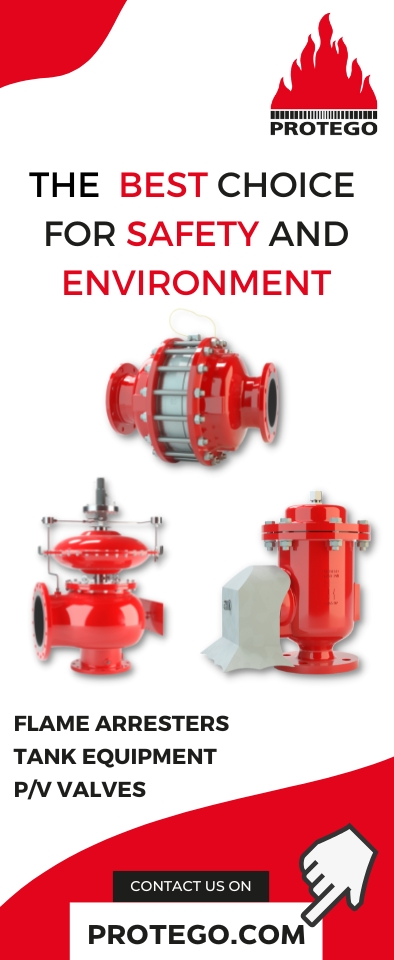 Tank Storage Magazine speaks with John Hoblyn, director at Valleytank, about celebrating expansion alongside a momentous anniversary
Tank Storage Magazine speaks with John Hoblyn, director at Valleytank, about celebrating expansion alongside a momentous anniversary
50th-anniversary celebrations finally took place for Valleytank, following postponement due to the pandemic. Founded in 1970, Valleytank now boasts 50 years of expertise and operations in the industry. Over the past five years, Valleytank has invested $9 million to upgrade the terminal. This significant investment emphasises the facility’s prioritisation of employee safety, protection of the environment and first-class service to its customers.
The evolution of Valleytank
50 years ago, Norwegian shipowner Odfjell was using small chemical parcel tankers to move products to and from Montreal, Canada, and Great Lakes. Before building Valleytank, its ships spent several days on the way in and out discharging directly to truck. Given that shipowners only make money when ships are at sea, this situation was not ideal. With the new terminal, stops in Montreal are reduced from days to a few hours.
The new terminal was designed by a British engineer who brought with him the dock line system, where the stainless-steel piggable lines run right through the terminal with short links to all tanks. Valleytank was the first tenant of the Port of Valleyfield and had 17 tanks with a total capacity of 17,000 m³ and tank sizes ranging from 320 m³ to 2,800 m³.
Located in the Port of Valleyfield on the St. Lawrence Seaway, there is a 180 m tanker berth with a maximum draft of 7.9 m. The terminal can accommodate 25 rail tank cars and is connected to CN, CP, CSXT and Norfolk Southern, and is adjacent to the Montreal ring road, Autoroute 30, with easy access to Autoroutes 20 and 40.
Close to the west of Montreal, it is strategically placed to serve customers in the Montreal area together with eastern Canada and the eastern USA. Valleytank recently renewed its lease with the Port for 20 years with options for a further two 10-year periods. Valleytank is now owned by Increase Oil Recovery A/S based in Bergen, Norway.
Expanding for increased demand
Valleytank’s market has changed significantly over the past 20 years. Primarily a marine terminal, products are now more frequently moved in and out by rail and truck. The demand has changed from the smaller tanks to larger ones resulting in several of the smaller tanks being scrapped to make space for larger tanks. The total capacity is now 46,700 m³ with 27 tanks.
John Hoblyn, director at Valleytank, comments: ‘The new and larger tanks are in the 5,000 m³ range. There are two stainless steel tanks and many tanks are heated and insulated. Having these larger tanks allows for larger quantities of specific products to be moved, such as, styrene monomer, sulfuric acid, caustic soda and diesel exhaust fluid.’
Spending appropriately
Tank operators’ priorities must be in order of importance: the safety of personnel, protection of the environment and service to customers. To this end then, what was the $9 million spent on at Valleytank?
‘The working conditions and safety of all personnel is paramount,’ explains Hoblyn. ‘Canadian winters are cold, but operations must continue, even when the temperature is below -30ºC or there has been a fall of 3 ft of snow.’ Improvements included shelters for operators, changing room renovations, better protective clothing and safety showers. ‘There are now three of these,’ says Hoblyn. ‘Each cost approximately $63,000 and they are all heated in the winter.’
By prioritising the safety of workers and making their working environment more comfortable, Valleytank has established a better facility to work in, which incorporates a healthier and happier workplace. ‘There is a new snow blower to keep the roads open for trucks and a larger shunter to move rail cars. The old golf carts, enabling operators to move rapidly throughout the terminal, were replaced,’ Hoblyn adds.
Protection of the environment is the next priority. There are scheduled inspections of all tanks, with consideration being given not only to the tank shell and roof, but particularly the floors; normally the first part of a tank to need attention. In the past five years, two floors have been replaced and one tank was completely scrapped and replaced. The cost of this work alone was in excess of $1.25 million.
To minimize heat losses, pipe and tank insulation need constant maintenance or replacement. It’s the same situation with tank coatings. One tank had to be recoated – a complex and costly process to the tune of $0.25 million – and many others had to be patched. The maintenance of five old tanks, originally purchased second-hand, became uneconomical and they were scrapped. Radar-operated level gauges were installed in several tanks to prevent overfilling. Constant work is being done to the tank dykes to ensure that they are at the correct height to contain a potentially catastrophic spill.
Regulations and proper handling
Every effort is made to ensure compliance with all regulatory standards. Transport Canada make regular visits to the facility and there are frequent audits by insurers.
Customers also carry out audits to make sure that their products are stored and handled correctly. Big chemical companies know that a major incident involving their product would make major headlines, with little mention of Valleytank. Annual environmental surveys are made by an independent contractor using 33 soil-testing wells on site, copies being sent to the port, the bank and any other party that may ask for it.
The port provides security outside working hours to prevent intruders and damage to the facilities.
Over the past five years there have been some significant investments; the largest being a 5,000 m³ coated and insulated tank that replaced two of the original tanks. The total cost, including insulated pipe connections, valves, and more, was about $3 million. A fully automated truck loading bay, available 24/7, was built outside the terminal gates. Hoblyn comments: ‘We are very proud of our automated truck loading bay available 24/7, common for terminals handling petroleum products but rarer for terminals handling chemicals.’ In addition, a generator was purchased to provide uninterrupted service during power outages and flow meters were installed to speed up truck and tank car loading.
‘We’re extremely encouraged by the feedback we’ve received from our customers’, says Jamie Johnson, Valleytank’s general manager. ‘Our hard work and financial commitment are paying off. We have confidence in our ability to deliver the levels of service expected by our customers.’
What of the future?
The demand for storage space has always been cyclical; periods of lots of empty tanks followed by a full terminal that is turning business away, and this is Valleytank’s current situation. Hoblyn says: ‘It is no longer forced to lower the rates to unprofitable levels to fill tanks and then get stuck with those rates even when conditions improve. It seems likely that industry will continue to need more bulk liquid storage and Valleytank intends to satisfy that demand.’
Studies are being made to plan additional tanks that will be at the far end of the land leased from the port. The other big project being studied is a modification to enable more products to be loaded at the automated truck loading bay.
For more information:
www.valleytank.ca














